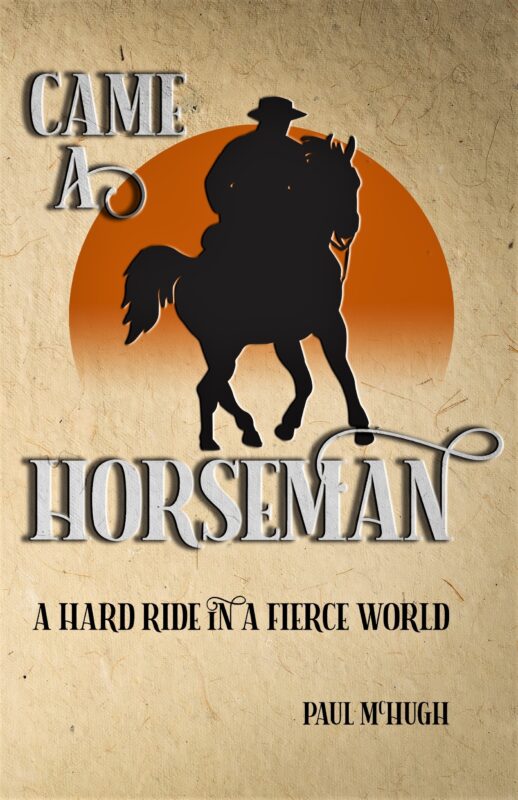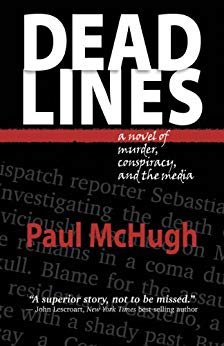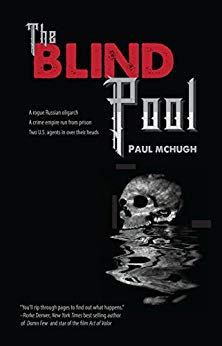
My best friend at Sacred Heart Elementary was the school’s Black janitor, named Israel—who went by Izzy.

We hit it off when I was age 7, attending second grade, and we stayed tight until I reached my 20s. By then I lived on the West Coast, and only saw Izzy at our old home church when I happened to fly back East for a visit.
It might sound strange, even presumptuous, to dub Izzy a pal when there was a ton I didn’t know about him. But I did know the most important thing: this man’s essential character was altogether gentle, mighty and kind. Which helped me come early to an understanding that the virulent racism plaguing South Florida throughout my youth was contrived and phony and utterly wrong-headed. By which I mean, a foul-spirited crock of crap.
A Confederacy of Dunces

How racist was that place during the mid-20th Century? Our local high school marching band was called “The Rebels.” Its members were actually clad in Confederate foot-soldier uniforms, waved the Stars-and-Bars for a banner as they marched, and played “Dixie” as an anthem at football games. The drinking fountains (and bathrooms when present) in stores were signed and separated into White and Colored, as were the town’s swimming beaches out on the shore of Biscayne Bay. Schoolyard insults took on a special venom when boys hurled racial slurs at each other; a fistfight would usually result.

I first met Izzy on the front steps of a small building, the original rectory of our parish, which had been repurposed as a sort of cafeteria and meeting hall. To bolster my tiny bag lunch, for a nickel coin, I’d bought dessert in the form of a flavored ice cup—basically, a dose of frozen Kool-Aid in a paper wrapper. I sat on those steps, bit down into it, and promptly lost both of my front baby teeth.
Izzy happened to pass by at that moment, saw my teeth sticking up out of the ice cup and noticed my woe at losing them. He sat right down beside me, gave me a soft poke in the ribs with his finger, and began to joke about how the Tooth Fairy would award me riches after I put not one, but a rare offering of two teeth beneath my pillow. So! This was no catastrophe, it was a blessing. Fairly soon, I chuckled right alongside him.
Then he amused me further by pinching up a wad of muscle on his forearm and making what he called a “mouse” wiggle around beneath his skin. By then, with the readiness and openness of a child, I felt myself bond with the man, thanks to Izzy’s warmth, generosity and humor.
A Man from Mount Olympus

At this point I should mention that Izzy owned the powerful build of an Olympic boxer. He was tall, square-shouldered and slim-hipped. The man must’ve been an athlete of some stripe in his youth, and done something besides mop up and swing trash cans to keep himself in such terrific condition as an adult. Since I myself was growing up poor and rarely had enough to eat, I remained a thin runt until my teens, when I began to buy my own food and started off lifting weights. For the type of physique I hoped to acquire I bore two major role models in mind: the famous body builder Charles Atlas and Izzy. To my mind, they looked pretty much the same, any minor shift in skin shade notwithstanding.
Thereafter, I would chat with Izzy on every school day when our paths crossed—which meant, in practical terms, most days over the next six years. Soon I got branded by other kids out on the schoolyard as a n***** lover. Yet I didn’t care. I’d been both scrawny and inept at sports for long enough to endure more than my fair share of bullying; that tag was merely one more swat. Besides, I’d kept myself just sane and smart enough to pick the game square where I intended to keep plonking down my chips, and it wasn’t on the side of racial hate.
Then and now, such hatred made zero sense to me.
More Than One Initiation

By the time I was 12, my understanding underwent a fuller flowering. It happened because I saw a sad trauma inflicted on one of Izzy’s children. She was a few years younger then me, probably 8 or so, and a newcomer to our town’s local Brownie troop. I don’t remember her name now, so many decades later. But I do recall quite vividly the dread insult inflicted upon her, right after her investiture at a Brownie scout ceremony.
For the sake of storytelling, let’s say this girl is Irene.
Coincidentally, her ceremony was held in a small hall of the same old rectory building where I’d purchased my little ice cup, a few years before. I was the only boy in attendance at this gathering of girls, because the event occurred right after school hours, and my mom—a fledgling troop leader—was my ride home.
My mother helped two other women give this fresh troop of Brownies their launch. Irene attended a ritual where the girls, one by one, stood in front of a round mirror plopped on the floor, wreathed in branches and ferns to form a sort of ersatz forest pond. Here girls repeated a magical incantation, “Twist me and turn me and show me an elf…”
Thus, Irene got inducted into the Brownies. And immediately following, one of the women informed her that, although other girls (all white) would soon head for a weekend campout at a park called Owaissa Bauer, Irene could not accompany them. This was due to the fact that Black people were barred from any entry or use of the county park. I watched shock and pain whack into Irene like a runaway train. She trembled as tears flooded her eyes and streaked down her cheeks. Precisely at the point when the girl had felt herself begin to belong, to be welcomed, to be fully included, she saw that status roughly ripped away. Instead, her young life and identity had been brazenly thrust into the role of an inferior.
In Pursuit of Healing

That was terrible to observe. I could barely imagine how horrible it was for her to feel. But soon she gave us one more sign as to how badly she was hurt. Irene spun around and tore out of that old rectory as if she fled dragons.
Mom quickly called me to her side, “Go after her, Paul,” she bade me. “And please ask her to come back.”
I managed to do so, but that was a tough assignment in many ways. Number one, Irene ran at a high rate of speed, struggling to break herself free of the evil suck of a world that had rejected her merely for the shade of her skin. When I finally caught up to her, Irene was sobbing, stumbling, gasping for breath and almost hysterical. I don’t recall much about the stream of babble that came out of me as I attempted to calm her and persuade her to return. It probably included stuff like I felt very sorry and sad for her, that her dad was my friend, and that if she would please return with me, the women all hoped to talk to her.
In the event, Irene finally put her small hand in mine, then allowed me to lead her back. When we arrived, my mom heaved a sigh of relief, then all three women clustered in a knot around Irene, and a great deal of whispering went on between them.

I don’t remember if Irene chose to remain a Brownie, or not. I think she did. I never attended any other meeting of that troop.
The Why of How
However, I did not forget either Irene’s tragic pangs, or the immense fortitude she displayed as she chose to walk back with me into that hall, where an anvil of oppression had just been dropped on her head. Nor have I forgotten the way that incident deepened my conviction that at the core of racism lay a lunacy that was both ugly and damaging. It was all the more so for being wholly ginned-up and arbitrary.
I saw no reason a nasty force like that should ever be allowed to become a cultural given.

In the years that followed, off and on, I struggled to try to comprehend some of the roots and causes of racism. While attending a Catholic seminary, for an elective term paper, I decided to write about scapegoating. This practice began in ancient times in the Mideast, and for the Jews it became codified by the Torah’s Book of Leviticus.
On Yom Kippur—the Day of Atonement—the high priest would sacrifice a bull before the temple, then take two goats. One would be slain for God, and the other would have all the sins—“the iniquities and transgressions of the people of Israel” —placed upon its head and be driven out into the wilderness and perhaps shoved off a cliff. Supposedly, this could cleanse the tribes of wrongdoing in the eyes of the deity.
Aside from any issue one may have with that blood-and-death based spiritual economy of ancient times, such a ritual underscores an enduring theme of many transactions occurring in our own time. Simply put, that theme is as follows: export your problem, import the solution. Seize what you desire, and ship away the rest. Take credit, spread blame. Assume a posture of righteousness for yourself, while accusing others of all wrong.
But why inflict a procedure like this on your human fellows instead of using a goat—or better still, some anonymous hunk of rock? Why seek to scrape your personal pain off on brothers and sisters? Well indeed, therein lies a rub.
A Tussle Between Tribes
Social science has suggested that tribalism is hard-wired in the brain. We are most comfortable living in the same valley with several hundred folks who look, speak, dress, and act like us, and we tend to stay suspicious of those saps over in the next valley who don’t quite manage to copy us correctly. In modern times, this translates to in-crowd vs out-crowd behavior. That behavior is easiest to generate when there are highly visible or tangible markers. So, for example, in the sport of surfing, long-boarders hated short-boarders and competed with them for waves, and both groups hated kayakers for ever daring to intrude on their mutual surf turf.

And so on and so forth. However, a tendency, just in and of itself, need not equal destiny. Civilization can be said to consist of resisting destructive social impulses whilst enhancing constructive ones. A Buddhist version would go, you might not be able to help what arises, but you can certainly decide what you do about what arises. Even if your culture shoves you in one direction, you can decide to head in another.
Tearing others down, trying to step on them to push yourself up, is a horrid way to attempt to enhance your own status. In fact, rightly seen, such a procedure reveals only insecurity, callousness, and a severe lack of imagination and empathy. It promotes atavism, while demoting if not destroying a prospect of positive collective action.
It’s particularly galling when the activity is based on literally skin-deep superficialities like skin pigmentation. In modern America, of course, while the tone of one’s hide is still commonly used as a basis for discrimination and scapegoating, it’s far from the only one. Political or religious or regional or cultural or economic circumstances will also do nicely, and shall be particularly effective when invoked in combination.
Fictional Findings
In my writing, I have set myself against this. Not primarily as a moral posture. I prefer to think that I do so on the basis of sheer realism. Compared to the variation between species, not to mention the gulf that yawns between sentient life and inert matter, the differences between one human being and another human being are vanishingly small.
Thus, my personal belief is that there’s only one race—the human race. We’re all of a kin. Varying elements like the shades of skin, kinds of hair, shapes of noses or eyes, cultural histories and practices for me are all only present to intrigue us and to be cherished and celebrated. Certainly not to divide us and lead us to victimize one another. That’s a recipe for creating hell, not a greater and a better civilization.

In my first novel, “The Search for Goodbye-to-Rains,” I presented a fictional Izzy as Rafe, a janitor in the Student Union building at FSU, a man whose grassroots philosophizing inspires my hero, Steve Gitane, to hop on his motorcycle and set out on a cross-country quest of self-discovery.
And in the novel I’m writing now, some forty years on, I have an old reporter turned investigator, one Colm MacCay, who confronts a leading Neo-Nazi in the following manner…
“I’ll give it to you straight, with the bark off. Your heap of dingbat propaganda flails around in vain to serve us a vacuous theory of white supremacy. Because that’s all this Aryan bullshit truly is. Here’s your bulletin, Strassel. Whiteness is not a race, it’s a skin condition. Only missing melanin. In the Ice Age for some humans, sunburn ceased to be a problem while lack of vitamin D turned into one. So a mutation that would lower skin pigment levels got useful, briefly, to a few people in the north. Consequently, all your vile plotting and your thefts and your killing is done to shore up a huge delusion—that you and other mutants who happen to look a little bit pale deserve to be put in charge of everyone else. Totally fucking ludicrous.”
A Twist of Fate

Besides his custodial duties, eventually Izzy also acquired a role as a bus driver for my alma mater. And not long after he began driving that bus, he was involved in a major traffic accident that crippled him. The next time I saw my friend in our old hometown, he could barely walk, achieving a lurching gait only with the aid of a stout cane. He also had to sit on a well-padded chair at the back wall of the church during Mass. Genuflecting or kneeling or even standing up for any length of time had vanished entirely from a formerly formidable repertoire.
Despite the handicap, he yet maintained both a stoic dignity as well as his characteristic warmth. His eyes still lit up when he saw me. I suppose my eyes did the same. We clasped hands, and I told him that he had long been a role model for me, that he had inspired me to achieve and maintain a good level of bodily fitness. He laughed and said that while I may have managed to get there, I should be quite careful about how smartly I hung onto it, since life could snatch it away in a heartbeat.
What I did not tell him—and later wished I had—was that he was also my role model for a grand depth and steadiness of personality, as well as a generosity of spirit. I didn’t know if Izzy had suffered from racism and discrimination over the course of his own life. Likely he had to some degree, while observing much more of it. Yet he’d never allowed that to poison or embitter him. One way to describe this man’s potent and dignified presence is to say it’s the sort of quality you saw displayed by Morgan Freeman and Denzel Washington in some movie roles, and many times more in true life by Malcolm X and Martin Luther King as they stood up before crowds and a microphone. Especially Dr. King, on that day on the National Mall when he uttered this line: “I have a dream that my four little children will one day live in a nation where they will not be judged by the color of their skin but by the content of their character.”

Izzy passed over; he’s now long gone. Yet I continue to think of him in this way: Farewell to you good sir, and Godspeed on a flight to your hopefully eternal reward. I know that somewhere, somehow, you shall always be holding my hand, just as I will always hold the hand of your daughter.
That’s my position on race.








